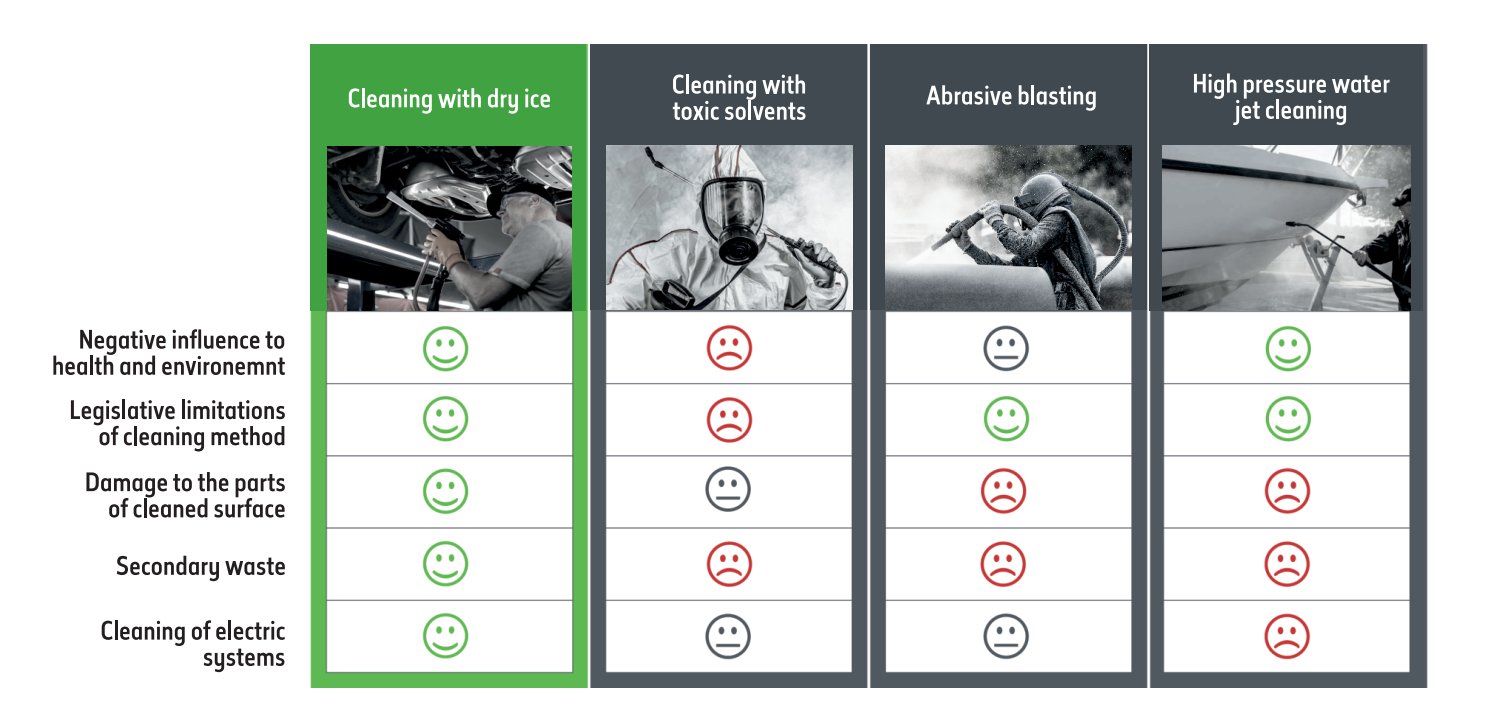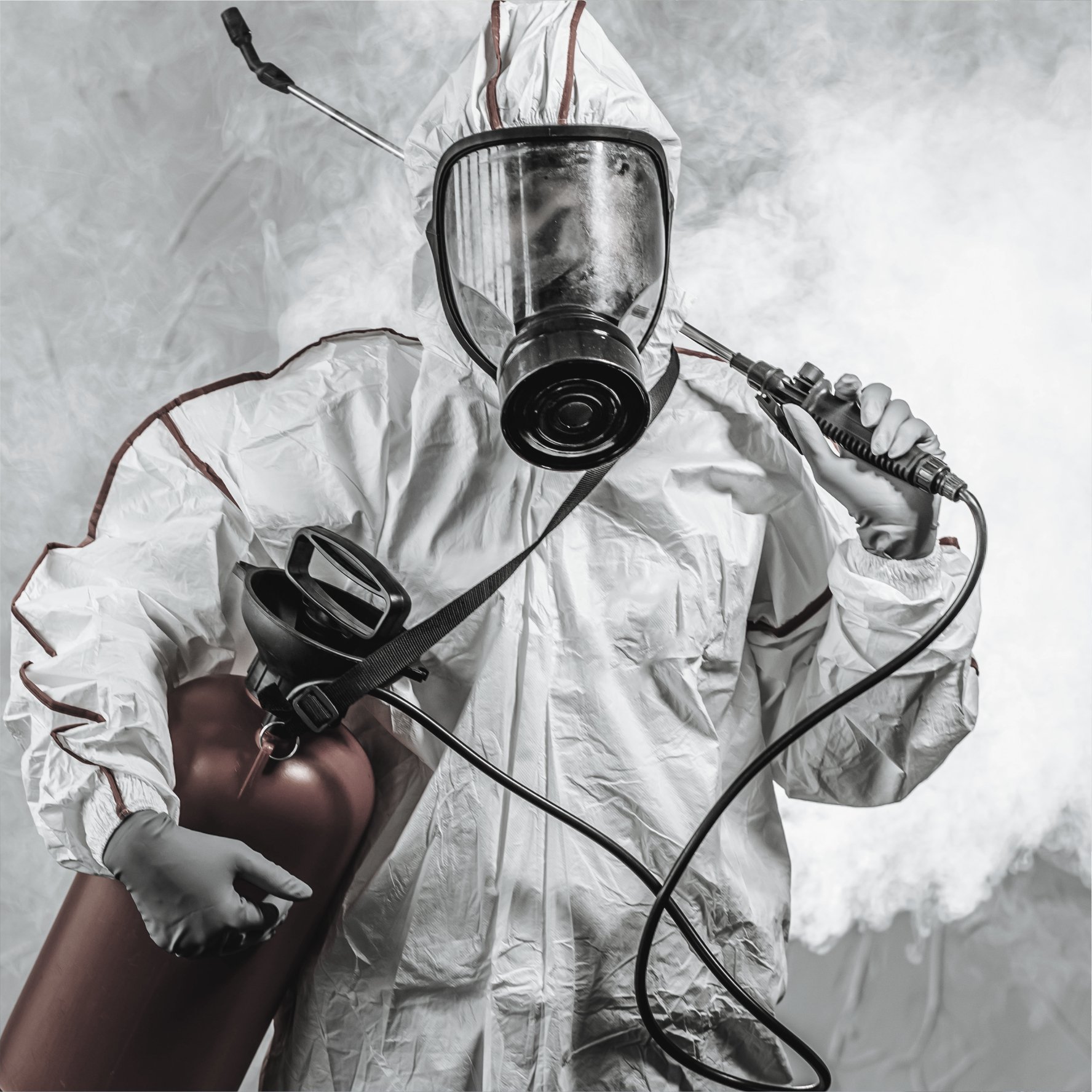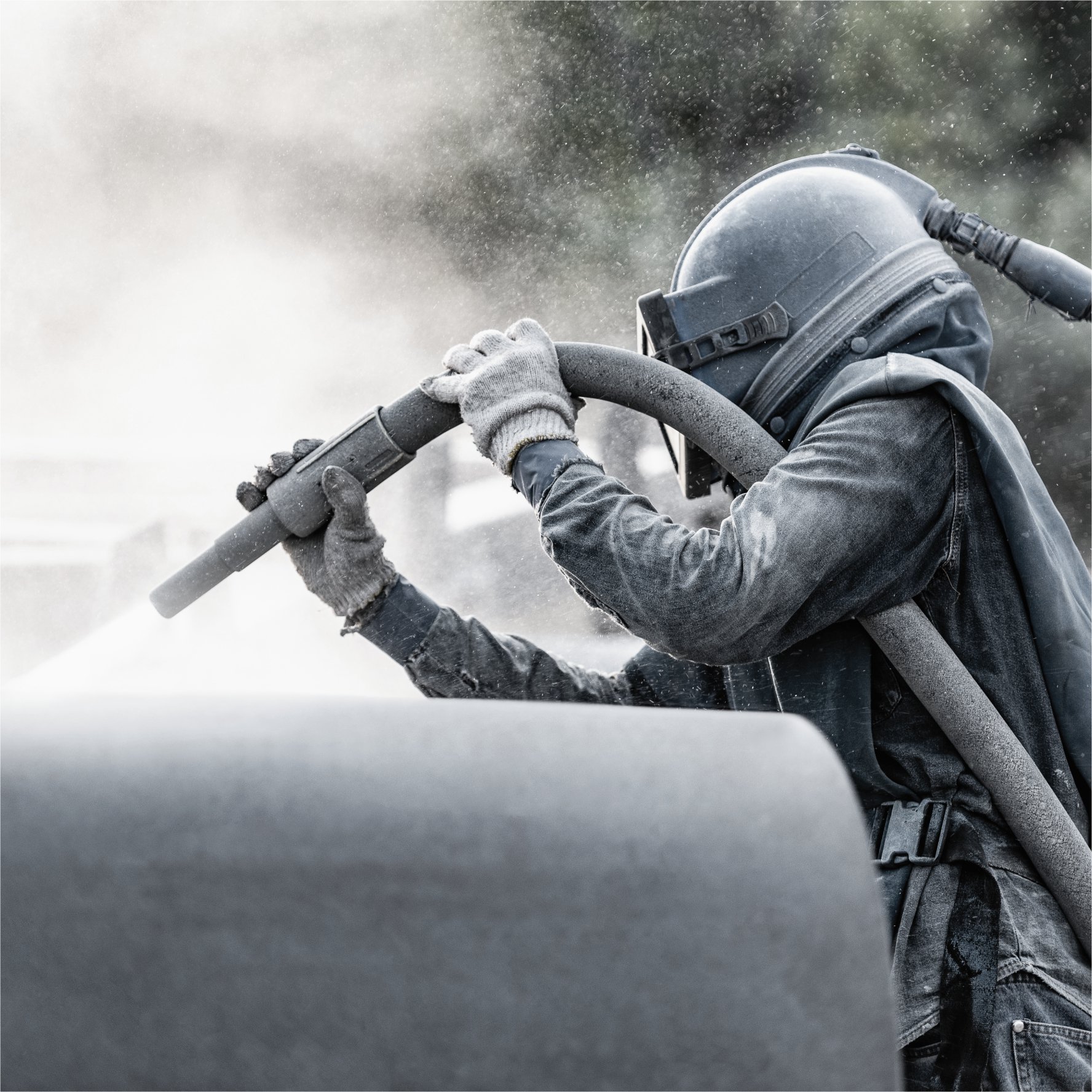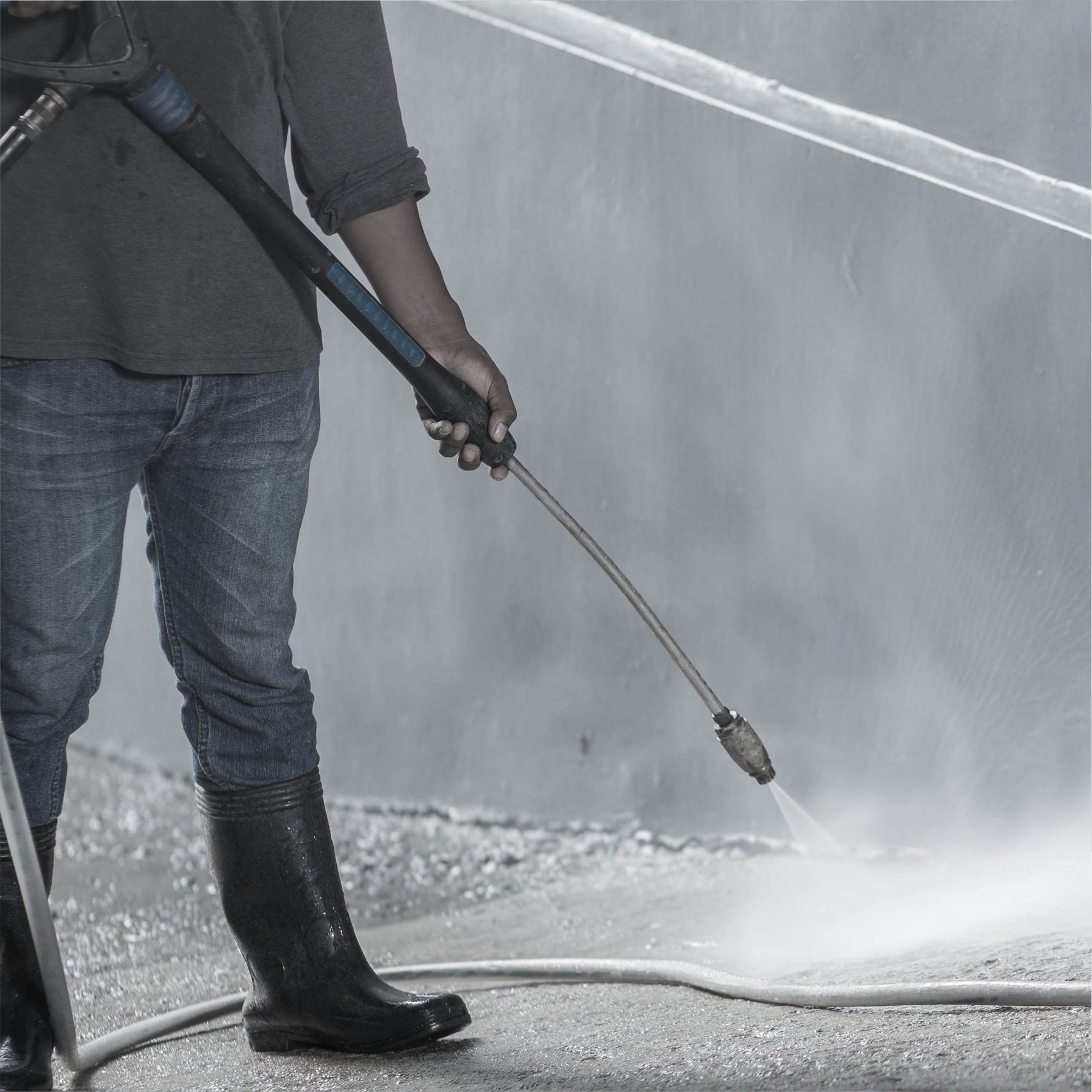 Made in Slovakia
Made in Slovakia ISO 9001
ISO 9001 Made in Slovakia
Made in Slovakia ISO 9001
ISO 9001Increased productivity and economic efficiency, stricter conditions for environmental protection, and employee safety during when technological equipment is cleaned and maintained requires more modern technologies to be applied.
Dry ice cleaning ideally meets these requirements and becomes an important alternative to conventional cleaning procedures. Blasting machines with dry ice saves a significant amount of time since it is not necessary to disassemble and subsequently reassemble machine parts.


Generally after treatment, solvents require separate disposal.
Halogenated hydrocarbons and other cleaning additives have adverse effects on health and the environment.
Dry ice is non-toxic. The use of toxic solvents is often restricted by law!
No legal restrictions are placed on the use of dry ice.
Glass balls or plastic granulate...
Using abrasive elements (glass or plastic granulate) damages the surfaces of cleaned parts and reduces their service life. Dry ice pellets are non-abrasive and extremely gentle to cleaned surfaces.
Unremoved blasting medium residue can significantly impair production processes. Dry ice pellets evaporate immediately during cleaning, so there is no risk.
Residues after blasting require separate disposal, often post-treatment. Dry ice cleaning generates no secondary waste – dry ice sublimes immediately.


High-pressure water cleaning damages the surfaces of cleaned materials.
Dry ice pellets are non-abrasive and do not damage cleaned surfaces.
High-pressure water cleaning is unsuitable for cleaning electrical systems.
Dry ice is non-conductive and therefore suitable for cleaning electrical systems and equipment.
Water and residues released by cleaning must be disposed of separately. Dry ice cleaning generates no secondary waste.
Conventionally cleaned areas and equipment require a long time to dry thoroughly. Dry ice cleaning is a dry process, which significantly reduces downtime.